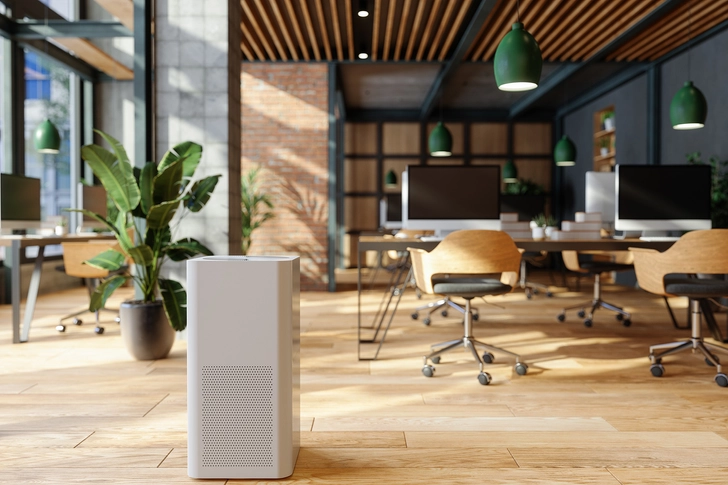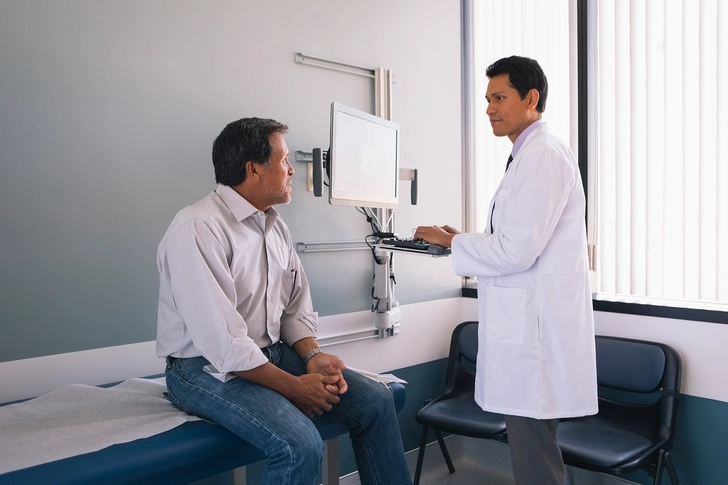- Overview
- Symptoms & Causes
- Diagnosis and Stages
- Treatment & Rehabilitation
- Living With & Complications
- View Full Guide
Good Job: 10 Tips to Manage COPD at Work


Dealing With COPD on the Job
Millions of people live with chronic obstructive pulmonary disease (COPD). Building a self-management plan will help you take control of symptoms like:
- Fatigue
- Pain
- Depression
It is a chronic condition that affects people differently. So what works for you might not work for other people dealing with COPD. Creating a management plan with your doctor can help you keep working and stay productive without sacrificing your health.

Wash Your Hands Often
You’ll want to protect yourself from getting sick from a virus or infection. Make sure you’re washing your hands frequently at work. Keep hand sanitizer around as well to use when opening doors or touching shared space items.

Maintain a Good Posture
Breathing can be difficult with COPD. If you’re slouched over at your desk, you’re not giving your lungs the full space they need to breathe. You can talk to your doctor about maintaining a good posture at work.
Feeling breathless at work has been shown to cause high productivity loss. When your COPD flares up, it’s harder to concentrate and get any job done.

Take Breaks Through the Day
A well-rested body is crucial for your overall health. Getting enough rest throughout the day can help prevent COPD flare-ups. Keep small high-protein snacks around to recharge you during your breaks. It’s okay to sit down or take a minute if you feel breathless at work.

Schedule Your Work Into Manageable Segments
If possible, schedule meetings and working sessions into smaller segments. You don’t want to be tied to meetings all day if your COPD symptoms appear. Make workplace adjustments that fit your needs.
Notice signs of a flare-up. If your ankles or legs are swelling or your heart is rapidly beating, other problems may make your condition worse. Make sure your office space is comfortable and set up to support you.

Organize Your Desk for Convenience
When setting up your workspace, make sure the things you need daily are closest to you. Make sure you’re not wearing yourself out by constantly walking around looking for items. Ensure your desk is strategically designed to help you pace yourself.

Avoid Smoke-filled Areas
Even if you don’t smoke, try to avoid areas where coworkers smoke. Ensure you’re not spending a lot of time in smoky or dusty environments. These particles can get in your lungs and cause a COPD flare-up.

Get Your Steps in During the Day
Shortness of breath is a common COPD symptom. So getting steps and exercise seems counterproductive. But, by working out and moving a little each day, you can improve your overall health. Make sure you keep water with you and try to eat healthier too.

Develop Breathing Techniques
COPD can make you feel like you’re trying to catch your breath. You can practice overcoming shortness of breath with deep-breathing exercises. Belly breathing, or diaphragmatic breathing, can help you feel your lungs fill with air. With these techniques, you can relax your airways and return to a normal breath, all while at your desk.

Add an Air Purifier and Dehumidifier to Your Workspace
Remove workplace dust or irritants from your office. Keeping an air purifier will help reduce the number of particles floating around.
A dehumidifier will keep the air from getting too thick with moisture, which can end up in your lungs.

Make Time for Appointments
Make sure your work will allow you to leave to attend doctor’s appointments. Joining a pulmonary rehabilitation program will help you learn techniques to manage your COPD. Schedule meetings and other work around these appointments.
PHOTO CREDITS:
1. Science Photo Library / Getty Images
2. Science Photo Library / Getty Images
3. DigitalVision / Getty Images
4. E+ / Getty Images
5. DigitalVision / Getty Images
6. DigitalVision / Getty Images
7. Moment / Getty Images
8. Moment / Getty Images
9. Westend61 / Getty Images
10. iStock / Getty Images
11. E+ / Getty Images
12. DigitalVision / Getty Images
SOURCES:
American Lung Association: “COPD Management Tools.”
CDC: “Managing Chronic Obstructive Pulmonary Disease (COPD).”
COPD Foundation: “If You Are Newly Diagnosed with COPD.”
European Respiratory Journal: “Work productivity loss in mild to moderate COPD: lessons learned from the CanCOLD study.”
National Jewish Health: “10 Tips for Managing COPD.”
American Thoracic Society: “Chronic Obstructive Pulmonary Disease and Work: Is It Time to Stop?”
Asthma and Lung UK: “What can you do to manage your COPD? ”
NHS inform: “Living well with COPD.”
Better Health Channel: “Lung conditions - chronic obstructive pulmonary disease (COPD).”